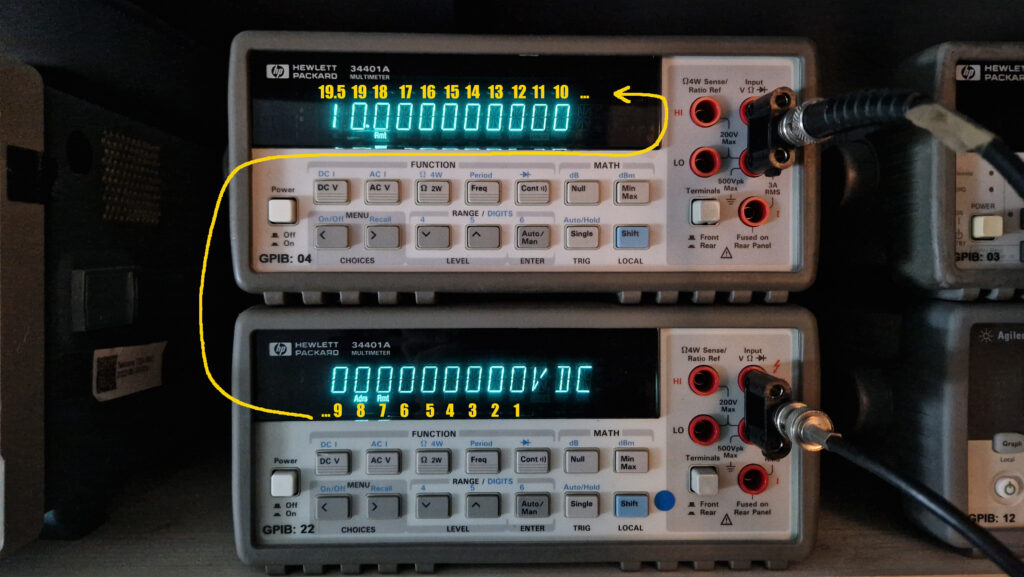Measuring voltages accurately is a basic task for technicians, engineers and scientists. The voltages to be measured range from perhaps few picovolts to several megavolts – a dynamic range of 18 orders of magnitude! But every modern digital multimeter is kinda limited in resolution. The multimeter’s resolution can be stated in the number of digits it can resolve. A 6 digit multimeter can resolve six decimal places going from 0 to 9. In a decimal number system, this corresponds to \(10^6\) numbers or 1 million digitizing steps. Without going much into detail and exposing my limited knowledge on this matter, I’ll just link to Keysight’s Website where everything is well explained.
Older multimeter models such as the shown MeraTronik V543 can resolve only \(2 \cdot 10^4\) numbers in the selected measurement range (e. g. ±1 V = 2 V full scale: \(2~V/2 \cdot 10^4 \rightarrow 100~µV\) resolution).

One of the best and most accurate digital multimeters in present time – the HP 3458A – has “only” a resolution of 8.5 digits, which hasn’t improved for about 35 years.

The so-called “Voltnuts” (crazy electro-fanatics) buy those HP multimeters on a second hand market for $3k to $7k. This surely is crazy and overpriced and in my opinion just not worth it. How about buying a couple of cheaper 6.5 digit multimeters (e. g. HP 34401A for about $200 to $400) and combining them in a serial configuration? I’ve achieved a total of 19.5 digit resolution this way*. I was able to display 10 volts up to 18 decimal places, e. g. attovolts resolution and saved a lot of money.

*If you don’t believe this nonsense, it’s fine. I can live with that. It’s April Fools’ day anyway 😉
